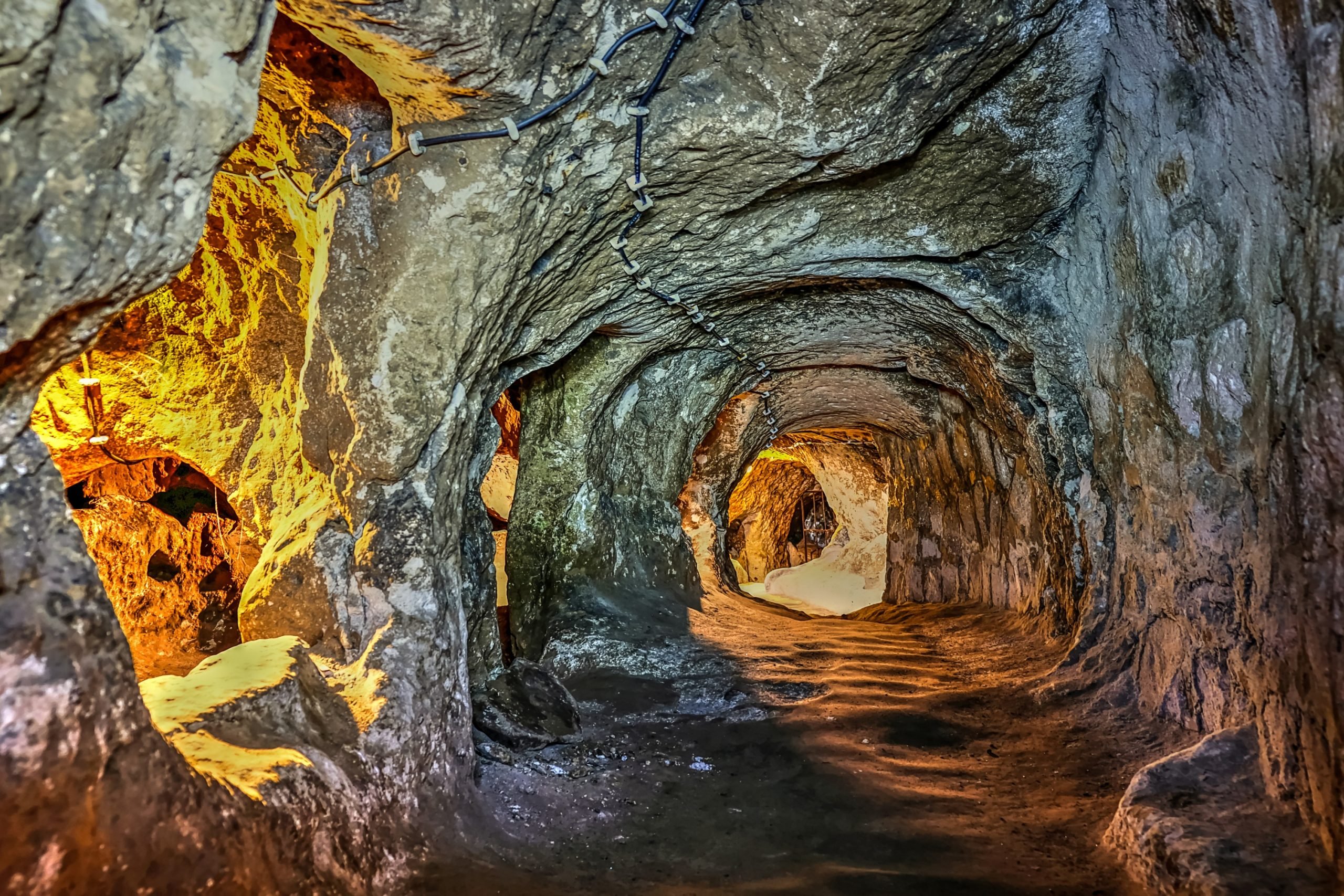
Above ground, the Cappadocia region is a UNESCO world heritage site in Turkey that attracts millions of visitors every year. The sky is regularly polka-dotted with colorful air balloons, their riders taking in the fantasia of the landscape’s cascading crags and mushrooming spires, wrought by millennia of volcanic eruptions and erosion.
Below ground, a wonder once lost to time and memory has been rediscovered, equally marvelous, but etched by human ingenuity rather than nature’s design.
A hot air balloon flies over over Cappadocia, a UNESCO World Heritage Site with historical, cultural and natural riches. Photo by Murat Asil/Anadolu Agency/Getty Images.
Since time immemorial, the human psyche has been tantalized by the prospects of hidden dimensions and secret worlds. Imagine the awe, then, when an unnamed man living in Cappadocia, Turkey conducting home renovations in the 1960s tore down a wall and stumbled upon a giant network of seemingly endless subterranean tunnels. Those passages opened up into rooms and halls, revealing an ancient underground city that had been lost to time and memory.
The Derinkuyu underground city is a sort of gargantuan anthill, except made by and for humans—up to 20,000 of them at a time, in fact. The city descends 280 feet into the earth, divided into eight levels. Upper levels were primarily used for living and sleeping, while lower levels were used for storage, even housing a dungeon. Bringing animals further down would have proven impossible, as tunnels narrowed the deeper they were dug, so the barn is located on the first floor, complete with water troughs and holes carved into the rock face for hitching cattle.
This expansive chamber, deep within the Derinkuyu underground city highlights the city’s capacity to house thousands, providing a safe haven for inhabitants during enemy attacks or harsh conditions above ground. Photo: Shutterstock.
On other levels, spaces for livestock, a church with a baptistry, schools, kitchens with ovens, and even a dedicated winery were discovered. The far-stretched system of interconnected rooms was carved out of the region’s tuff rock, a remarkably malleable and soft rock composed mostly of volcanic ash and dust, using primitive tools like hammers and pickaxes.
Throughout the underground city, thousands of ventilation shafts and water tunnels were dug out to the surface, allowing fresh air, light, and water to flow freely. Structural soundness was also considered, with no evidence of a single cave-in ever occurring, as supporting beams were lodged between crevasses across the city.
The narrow corridors of Derinkuyu connect smaller, intimate rooms designed for daily life underground. Photo: Shutterstock.
Derin kuyu is Turkish for “deep well,” a name derived from the deep shafts that were used as wells by locals, even before the discovery of the subsurface city, none the wiser. While other underground networks have been discovered in the area, none come anywhere near the scope and scale of Derinkuyu’s. It is suspected that several of these cities may have been connected by as yet undiscovered tunnels, as unsuspecting locals continue to uncover new tunnel entrances across the Cappadocia region.
As for who built and lived in the city, the jury is still out. Some experts suggest the tunnels were first constructed as far back as 2,000 B.C.E. by the Hittites, one of the first major Bronze Age civilizations in Western Asia. Others suggest the tunnels were expanded on by Phrygians in 700 B.C.E., or even still by early Christians in the early centuries C.E. People didn’t live in these underground quarters year-round, however, as they were mainly used for shelter during times of conflict or extreme weather.
Such mammoth underground cities usually exist only in the realm of fantasy. Derinkuyu’s builders, who successfully constructed this world to keep their loved ones safe, were so successful that it remained securely hidden for centuries right under our noses. What else might be waiting to be discovered in our own backyards?
Sometimes, archaeology gets big. In Huge! we delve deep into the world’s largest, towering, most epic monuments. Who built them? How did they get there? Why so big?